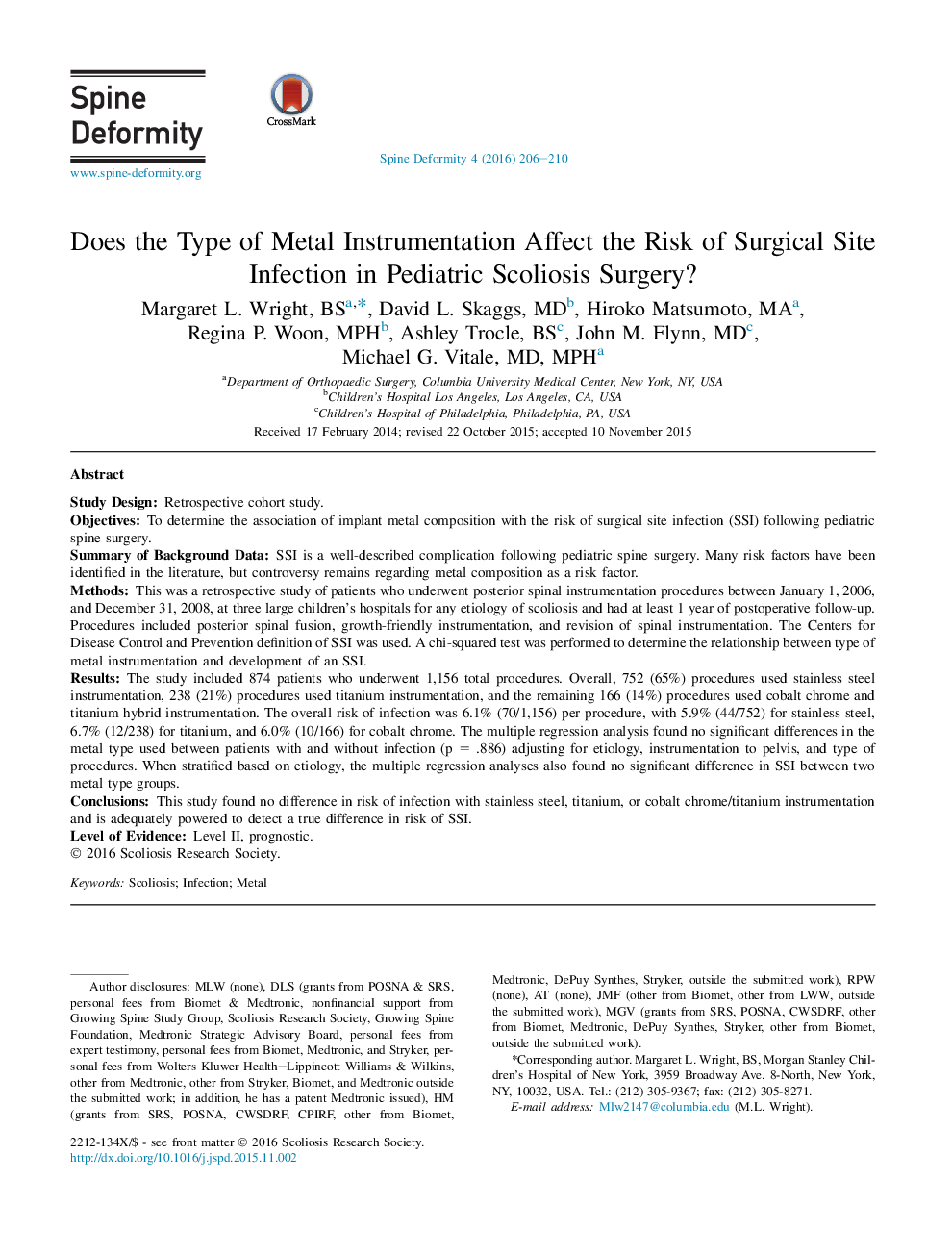| Article ID | Journal | Published Year | Pages | File Type |
|---|---|---|---|---|
| 4095384 | Spine Deformity | 2016 | 5 Pages |
Study DesignRetrospective cohort study.ObjectivesTo determine the association of implant metal composition with the risk of surgical site infection (SSI) following pediatric spine surgery.Summary of Background DataSSI is a well-described complication following pediatric spine surgery. Many risk factors have been identified in the literature, but controversy remains regarding metal composition as a risk factor.MethodsThis was a retrospective study of patients who underwent posterior spinal instrumentation procedures between January 1, 2006, and December 31, 2008, at three large children's hospitals for any etiology of scoliosis and had at least 1 year of postoperative follow-up. Procedures included posterior spinal fusion, growth-friendly instrumentation, and revision of spinal instrumentation. The Centers for Disease Control and Prevention definition of SSI was used. A chi-squared test was performed to determine the relationship between type of metal instrumentation and development of an SSI.ResultsThe study included 874 patients who underwent 1,156 total procedures. Overall, 752 (65%) procedures used stainless steel instrumentation, 238 (21%) procedures used titanium instrumentation, and the remaining 166 (14%) procedures used cobalt chrome and titanium hybrid instrumentation. The overall risk of infection was 6.1% (70/1,156) per procedure, with 5.9% (44/752) for stainless steel, 6.7% (12/238) for titanium, and 6.0% (10/166) for cobalt chrome. The multiple regression analysis found no significant differences in the metal type used between patients with and without infection (p = .886) adjusting for etiology, instrumentation to pelvis, and type of procedures. When stratified based on etiology, the multiple regression analyses also found no significant difference in SSI between two metal type groups.ConclusionsThis study found no difference in risk of infection with stainless steel, titanium, or cobalt chrome/titanium instrumentation and is adequately powered to detect a true difference in risk of SSI.Level of EvidenceLevel II, prognostic.
